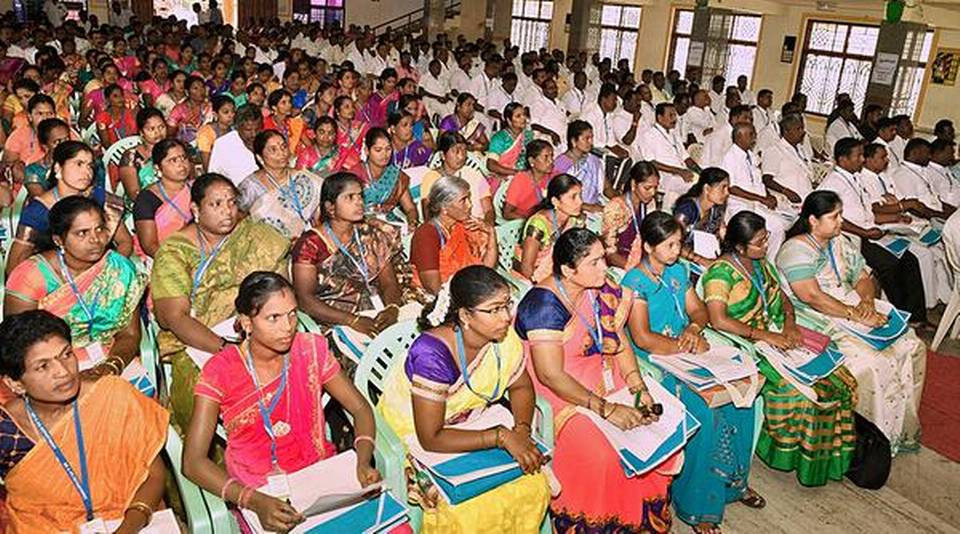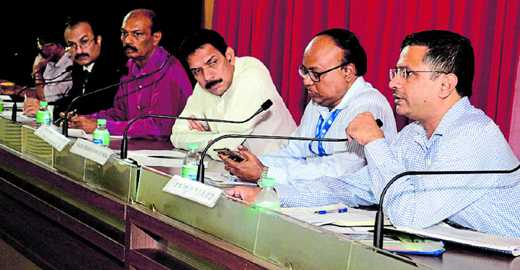Local governments are required by the Indian Constitution to design and implement strategies for “economic growth and social justice” (Articles 243G and 243W).
To achieve this goal, several complementary institutions and measures were established, including the Gram Sabha to facilitate citizen participation; the District Planning Committee (DPC) to prepare bottom-up and spatial development plans; and the State Finance Commission (SFC) to ensure vertical and horizontal equity.
Given the correct impetus, the government of India’s “Mission Antyodaya” programme, which was launched in 2017-18, has enormous promise for reviving the goals of these historic democratic changes.
The nodal agents for the mission are the Ministry of Panchayati Raj (MoPR) and the Ministry of Rural Development.
What is Antyodaya Mission?

- The Ministry of Rural Development envisions Mission Antyodaya as a mission mode initiative. It’s a framework for achieving quantifiable, effective outcomes on criteria that change people’s lives and livelihoods.
- The fundamental goal of Mission Antyodaya is to make the best use of resources by bringing together several initiatives that address multiple forms of poverty and making the gramme panchayat the centre of a development plan.
- An yearly survey supports this planning process by gathering data to examine the different development gaps at the gramme panchayat level.
What caused Mission Antyodaya to be launched?

- The Planning Commission’s fanatical pursuit of the old poverty line connected to calorie-income measurement proved inane and ineffective as a policy instrument.
- The SocioEconomic and Caste Census (SECC) 2011 statistics were ‘demanding’ remedial intervention. It was discovered that: o 8.88 crore households are disadvantaged and destitute in terms of multi-dimensional deprivations like as homelessness, landlessness, homes headed by single women, SC/ST households, or families with handicapped members.
- There are no salaried employment in 90% of rural families.
- There are 53.7 million landless families.
- There are no adult members in 6.89 million female-headed households.
- 49% of people have numerous deprivations.
- Manual casual labour provides 51.4 percent of income.
- There are 23.73 million people who have no or only one room to live in. Surprisingly, this occurred in a country that annually spends more than $3 trillion on the rural poor through the federal and state budgets, as well as bank-credit-linked self-help programmes.
What Challenges Do Rural Uplifters Face?
Gram Panchayats’ Gaps:
- In 2019-20, the ‘Mission Antyodaya’ survey collected data from 2.67 lakh gramme panchayats, encompassing 6.48 lakh villages with a population of 1.03 million people, for the first time.
- The survey’s maximum score values add up to 100 and are provided in 10-point class intervals.
- While no state in India receives a score of 90 or above, 1,484 gramme panchayats receive the lowest score.
- Ten states and all union territories are absent from the score range of 80 to 90.
- The overall number of gramme panchayats in the 18 states that have reported is only 260, accounting for barely 0.10 percent of the country’s total 2,67,466 gramme panchayats.
- The equivalent all-India average is as low as 1.09 percent. o Kerala leads the table (with a score range of 70-80), although it only accounts for 34.69 percent of the gramme panchayats in the state.
- Gram panchayats in this category are just 11.28 percent in Gujarat, which is second to Kerala.
Gram Panchayats’ Poor Performance in the MA Composite Index:-
- Although just 15 gramme panchayats (out of the total recorded) are in the worst 10 percentile, more than a fifth of gramme panchayats in India are in the bottom 40 percentile.
- In contrast to the rest of the States, only Kerala’s gramme panchayats are above this.
- Even after 30 years of decentralisation reforms and nearly 75 years of independence, the gap report and the composite index reveal unequivocally that achieving “economic progress and social justice” remains a distant objective.
Digital Governance Through AI
GPDPs and MA Surveys Have a Missing Link:
- The process of producing complete GPDPs has been hampered by a missing link or connection between the Gram Panchayat Development Plans (GPDPs) developed and the gaps shown by the Mission Antyodaya (MA) Survey findings.
- According to MoPR rules, the findings and gap report evaluations from the MA Survey should be used to prepare the GPDP. This is not happening.
- Each panchayat is obliged to relate the actions undertaken in the GPDP to the gaps indicated in the MA Survey. However, the majority of GPDPs do not address the gaps revealed in the MA Survey.
- Even GPs who completed the MA Survey did not include gap reports in their final GPDP.
What is the best course of action?

Resources Integration:
- The potential for reducing the rising rural-urban divide is enormous. Given the Ministry of Panchayati Raj’s “saturation strategy” (100 percent objectives on certain goods), the prospects for universal primary health care, literacy, and drinking water provision are enormous.
- Now is the time to make a concerted effort to bring resources together, such as the Mahatma Gandhi National Rural Employment Guarantee Act, the National Rural Livelihood Mission, the National Social Assistance Program, the Pradhan Mantri Awas Yojana, and others.
Gram Sabha and Leaders’ Roles:
- Gram Sabha is a platform for grassroots engagement in government. It allows rural residents to participate in their village’s development programmes and makes the government more open.
- It is the elected officials, frontline staff, and local inhabitants’ obligation to ensure that the Gram Sabha operates according to the norms and expectations.
- Mahatma Gandhi once observed, “The Greater the Panchayats’ Power, the Better for the People.”
- The designated facilitators must facilitate community mobilisation, especially vulnerable groups such as SC/ST/Women.
- Village organizations/SHGs may be assisted in presenting a poverty reduction plan to the Gram Sabha, which may then be integrated into the GPDP following consideration.
Fiscal Resource Allocation:
- One of the significant failings is the failure to apply the data to India’s fiscal federalism, notably to enhance the transfer system and horizontal justice in the delivery of public goods at the sub-State level.
- Only strong policy interventions and enough funding to the grassroot levels can fulfil the constitutional purpose of planning and executing economic growth and social justice.
- India’s policy history has witnessed the phenomena of initiating major initiatives but failing to see them through to completion; nevertheless, there is no need to repeat history; instead, lessons must be learned and changes implemented.

